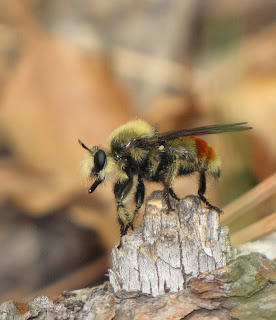Last week I posted a "how to" article on making identification requests online. I think it is only fair to suggest how to appropriately respond to identification requests. There is much needless redundancy on threads aimed at helping someone identify a given organism. Here are some ways to avoid that, as well as saving yourself time, embarrassment and/or criticism. Actually, the best default option is often to not respond at all. So, let's start there:
Do not respond to an identification request unless....
- You know what you are talking about. There are plenty of knowledgeable amateur naturalists, Master Naturalists, and citizen scientists, as well as professional scientists, online who can help make identifications. If you do not consider yourself in one of those categories, it may be best to refrain from commenting. That way, there is no need for someone else to correct you down the line. That said, you can be a professional and still be incorrect, but at least you'll be in the ballpark.
- You have read all of the previous comments! Most redundancy in threads comes from people eager to comment who do not realize the correct answer has already been given. Facebook does not make that easy, because a long thread leads to hidden comments and generates a header that reads something like "view previous [insert random number here] comments."
- You have something truly worthwhile to add to the conversation. Anecdotal observations can be genuinely helpful, and also create a sense of community in an online group. Post away. Comments like "Burn it with fire!" or "Eew, gross!" only reveal ignorance and intolerance. Use good judgment, and understand when to deploy a filter for your "hostile voice."
Ok, what else can we do, or not do, to make an identification request more efficient and productive? Here are some ideas....
- Do *not* post another image *within* an existing thread. The addition of more images within a thread, unless the images are of the same specimen, by the same person who started the thread, creates great confusion. The internet as a whole is not always the best source of anything, let alone correctly-labeled images, even if the Google search results say so. If you want to post your own images, start a new thread.
- Include links to resources that back up your answer. There is no such thing as too much information, and most people asking for the identification of an organism know nothing about it. So, providing a link that sheds light on the life cycle, biology, and ecology of the creature is usually received warmly.
- Learn who the other players are. If you doubt the credentials of someone else making comments, look them up and see whether your (low) opinion has any basis in fact. You might find that the person is a college professor, curator at a museum, author of a book, or otherwise has vast knowledge of the subject at hand.
- Do NOT argue with others. This is why I just suggested you get to know the other players, and find out who you can trust. Word your different opinion gently ("I think it is this rather than that, because of this characteristic, behavior, etc"). That way you are being respectful, and giving more insight, too.
I may or may not have covered everything here, so please comment with your own suggestions, including what I should have omitted. I may well revise this post accordingly.




